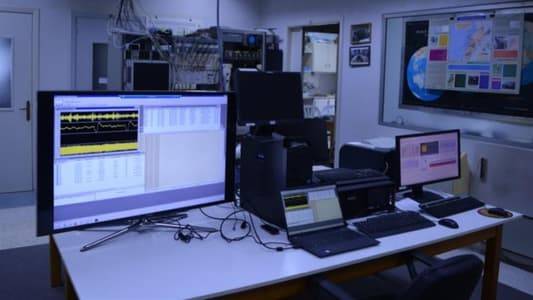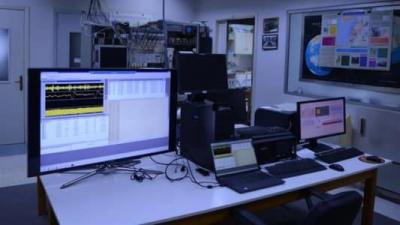The interview with the director of the National Center for Geophysics, Dr. Marlene Brax, couldn’t take place without interruptions... from the earthquakes. During our hour at the center in Bhanas, five weak tremors were recorded by seismic monitoring devices. It provided an opportunity to observe that there are earthquakes occurring without us feeling them, following the massive earthquake that hit Turkey and Syria in the early hours of February 6, which disrupted all surrounding tectonic plates and awakened fault lines that had been dormant for hundreds of years. The new seismic activity, which frightens the public, reassures geologists in our region; they view the February 6 earthquake as "a significant release of energy that will provide respite for the area for years to come," without implying that the minor tremors will cease, as "the Earth's crust is in constant motion and will not stop."
In Lebanon, citizens hope that after each earthquake it will be the last, yet the tremors continue, intermittently releasing stored energy underground. Brax points out, "We recorded 26 aftershocks exceeding 5 degrees in strength on the first day following the Turkish earthquake, and two similar tremors the next day, while hundreds of tremors measuring less than two degrees have been recorded," emphasizing that "Turkish observatories continue to record weak tremors."
**Aftershocks Persist**
Last Monday evening, the Lebanese felt a tremor originating from the Syrian coast, triggered by new movement of the East African Rift passing through the Syrian city of Latakia before merging with the Yammuna Fault extending to the Turkish Taurus Mountains, causing an earthquake measuring 6.3 degrees. "This is not an aftershock; it may result from pressure from the initial earthquake that caused fractures in the rock, meaning that the ground beneath it will need additional time to relax," according to Brax. Consequently, the ground movements did not stop there; in addition to several aftershocks following the first tremor, our already moving land experienced a second tremor hitting the Lebanese coasts yesterday at dawn, measuring 4 degrees on the Richter scale, which is not an aftershock this time but is of Lebanese origin, specifically from the sea off the southern shores, 64 kilometers from Sidon.
**Reassurance Also**
"The pressure is indeed easing, but no one can guarantee that tremors will not occur at all. Moreover, it is unacceptable to scare people with major tremors expected in the coming days, as there is no true scientific rule to link the tremor to its causes," said Dr. Antoine Samarani, a geology professor at the Lebanese University, reassuring that "all seismic movements we are experiencing come from the Anatolian plate in Turkey, which experienced an earthquake that will go down in history due to its magnitude." He mentions that "aftershocks will continue for many months."
**Strong Withdrawal of Water**
Regarding the decrease in the water level of the Mediterranean Sea, Dr. Milad Fakhry, head of the Marine Science Center, denies all hypotheses circulated on social media about "a fracture in the sea swallowing the water, or preparations for tsunami waves that will hit the coasts." He attributes the phenomenon to "natural cases related to water movement in the seas at this time of year, linked to tidal movements, which in turn are affected by the positions of the sun and moon relative to the Earth. This year, we are witnessing strong withdrawals of water, but it will end and return the water to its natural state."
**Public Safety**
These natural incidents are accompanied by panic; mere seconds after the tremor of the day before yesterday, Lebanese people flooded into the streets, trying to avoid buildings and narrow streets, resulting in unjustified traffic congestion, concerning public safety experts who see it as an obstruction to the movement of civil defense and ambulance vehicles, should there be a need for them.
The National Center for Geophysics recorded 26 aftershocks exceeding 5 degrees in magnitude. Public safety experts affirm that "the biggest mistakes that occurred yesterday during the tremor were some people rushing to the rooftops or heading to the coasts," advising those outside their homes to "stay away from bridges, power poles, and anything that could fall." Those inside homes are advised "not to exit until the shaking ends, to take cover under beds or tables, or beside structural columns. In case of collapses, these parts can provide some protection, and not to use building stairs during tremors." After calm returns, "disconnect electrical devices and gas, and refrain from using elevators."




